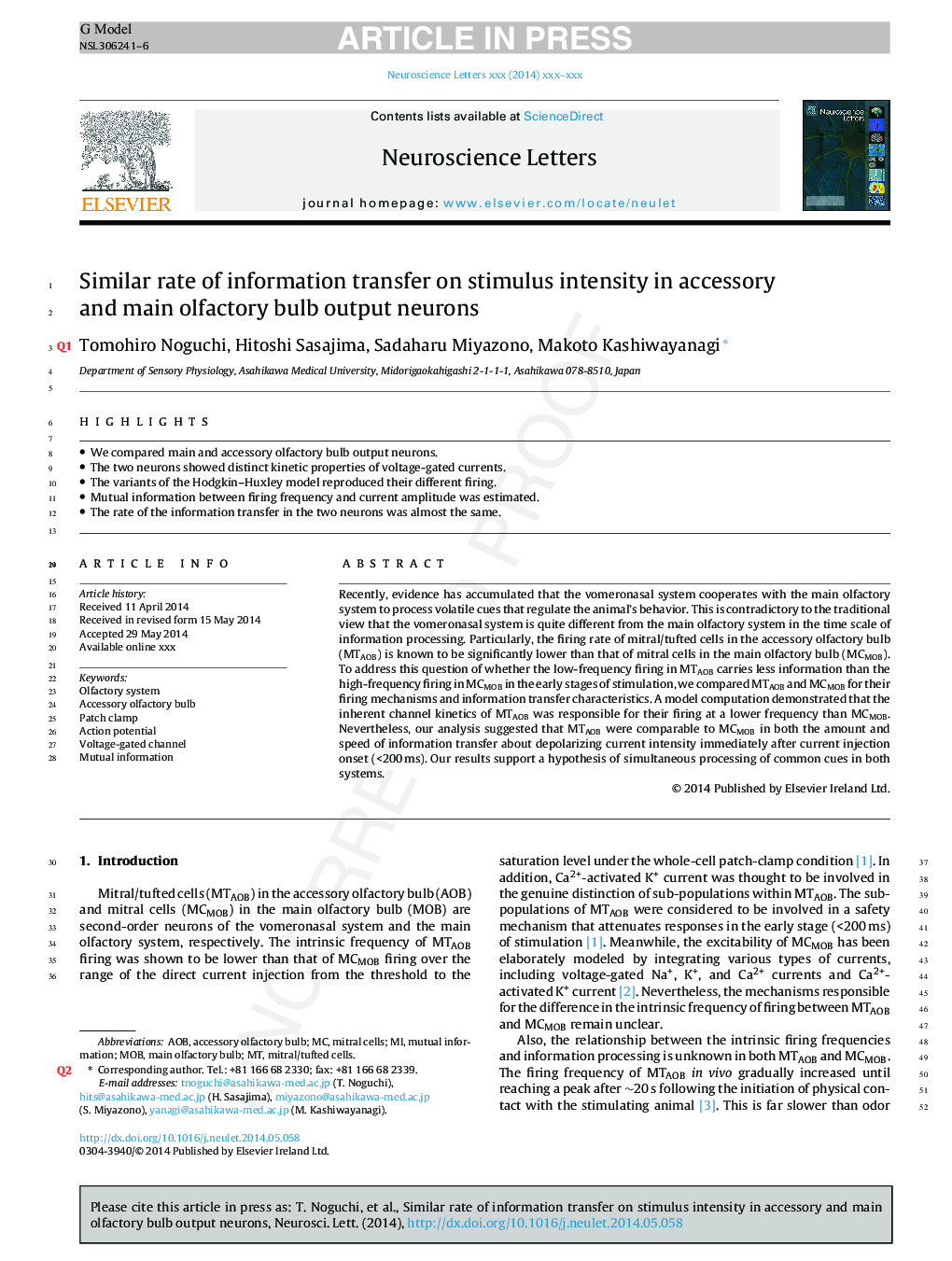| Article ID | Journal | Published Year | Pages | File Type |
|---|---|---|---|---|
| 6281920 | Neuroscience Letters | 2014 | 6 Pages |
Abstract
Recently, evidence has accumulated that the vomeronasal system cooperates with the main olfactory system to process volatile cues that regulate the animal's behavior. This is contradictory to the traditional view that the vomeronasal system is quite different from the main olfactory system in the time scale of information processing. Particularly, the firing rate of mitral/tufted cells in the accessory olfactory bulb (MTAOB) is known to be significantly lower than that of mitral cells in the main olfactory bulb (MCMOB). To address this question of whether the low-frequency firing in MTAOB carries less information than the high-frequency firing in MCMOB in the early stages of stimulation, we compared MTAOB and MCMOB for their firing mechanisms and information transfer characteristics. A model computation demonstrated that the inherent channel kinetics of MTAOB was responsible for their firing at a lower frequency than MCMOB. Nevertheless, our analysis suggested that MTAOB were comparable to MCMOB in both the amount and speed of information transfer about depolarizing current intensity immediately after current injection onset (<200Â ms). Our results support a hypothesis of simultaneous processing of common cues in both systems.
Keywords
Related Topics
Life Sciences
Neuroscience
Neuroscience (General)
Authors
Tomohiro Noguchi, Hitoshi Sasajima, Sadaharu Miyazono, Makoto Kashiwayanagi,
